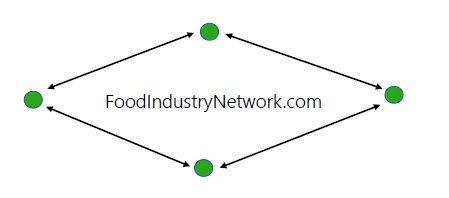New online decision-making tool for species at risk

An online tool to help farmers choose the best options to help preserve species at risk and their habitats is coming to Ontario in 2025.
Read Also


Financial protection for Canada’s fruit and vegetable growers near reality
Scot Davidson’s private member’s Bill C-280, otherwise known as the Financial Protection for Fresh Fruit and Vegetable Farmers Act, received its third reading Dec. 10 and awaits royal assent.
The Habitat and Biodiversity Assessment Tool was developed by the Canadian Forage and Grassland Association (CFGA) using a six-year, $1.2-million commitment from Environment and Climate Change Canada, with the goal of rolling it out to multiple provinces.
Why it matters: The tool is designed to streamline farmers’ application processes to use cost-share funding opportunities aimed at preserving ecosystems.
Alberta’s version of the tool was first to launch in 2020, and designed to work with that province’s version of the federally supported Environmental Farm Plan. Since then, it has been refined and adopted for use in Manitoba and Saskatchewan, although not necessarily in conjunction with the EFP.
CFGA announced last fall that as the funding ends, the assessment tool will be made available in Ontario, British Columbia, New Brunswick, Quebec and Prince Edward Island in 2025.
According to CFGA’s national technical lead François Blouin, the tool provides farmers and ranchers with information on what native species could occur on their land based on known or expected distribution of species, geographic location and habitat types and features.
“With that knowledge, stewardship opportunities for wild species can be suggested to the producers who can then decide on what, if anything, is compatible and desirable within their operational constraints and objectives,” he said in a release.
Adapting the tool for Ontario
At CFGA’s recent convention in Guelph, attendees learned from ecologist Meagan Morey of Oshawa-based consulting firm Blazing Star Environmental how the assessment tool was adopted for use in Ontario. CFGA is working with the Ontario Soil and Crop Improvement Association to roll out the program, and OSCIA contracted her firm to help make that happen.
Morey said province-specific ingredients being added to the Ontario version include species at risk in the province, their occurrence geographically and the habitat types they prefer.
For the Ontario version, program creators included all species listed on the provincial government’s Species at Risk website. It has 221 species in seven categories of biological life ranked by level of endangerment as well as susceptibility to habitat changes and how broadly they’re distributed across their range.
This information is incorporated into the tool using geographic information systems and cross-referenced to farmland in the province. It also takes into account farm-specific information provided by the landowner.
The goal of the tool is to determine which conservation-themed cost-share program would provide the biggest bang for the buck when it comes to protecting species at risk.
The Ontario version includes all land classified as agricultural. There are 38 unique habitats in the Ontario version, including natural areas and managed lands like pastures, as well as human structures like barns and bridges.
Among the habitats are alvars, thin-soiled landscapes over limestone rocks that only occur in northeastern Europe, Scandinavia and around the Great Lakes. Morey described them as “globally rare ecosystems, but there are numerous examples in Ontario.”
Given their unique nature in a Canadian context, it was necessary to develop specific stewardship opportunities for alvars. In the original Alberta version, the term “stewardship opportunities” was used in the same way best management practices has been used in Ontario in recent years.
The tool can account for the presence of livestock and wind turbines when making recommendations about best management practices.
Data includes a significant amount about the farm. Morey says it will be crucial for program administrators to anticipate the challenges farmers could face in providing the appropriate data and be prepared to assist when necessary.
But she’s also confident that once farmers feel comfortable that the data will lead to positive outcomes for their farm and for biodiversity, they’ll appreciate the approach.
“It can be quite daunting to access all the aspects of this, so allowing the tool to do this type of legwork is a great way for landowners to get a head start on stewardship,” she said.
The Ontario version is in its final stages of development and the plan is to have it available through the CFGA website “very early” in 2025. Interested farmers should watch for updates from OSCIA about workshops to build awareness and help familiarize people with the process.
“We hope to further refine the tool in Ontario by engaging with producers,” Morey said.
Angie Straathof, program director for OSCIA, agreed that “it is quite a crowded landscape for producers” when considering their options for conservation-themed cost-share programs.
She said OSCIA decided to work with CFGA to bring the habitat tool to Ontario when the provincial ministry of Environment, Conservation and Parks expressed interest in providing more money.
Straathof said a main value of the program compared to others is its incorporation of the farm’s geographic location through GIS technology.
“It’s really exciting that it will be launching imminently because it was definitely a labour of love.”
Source: Farmtario.com

